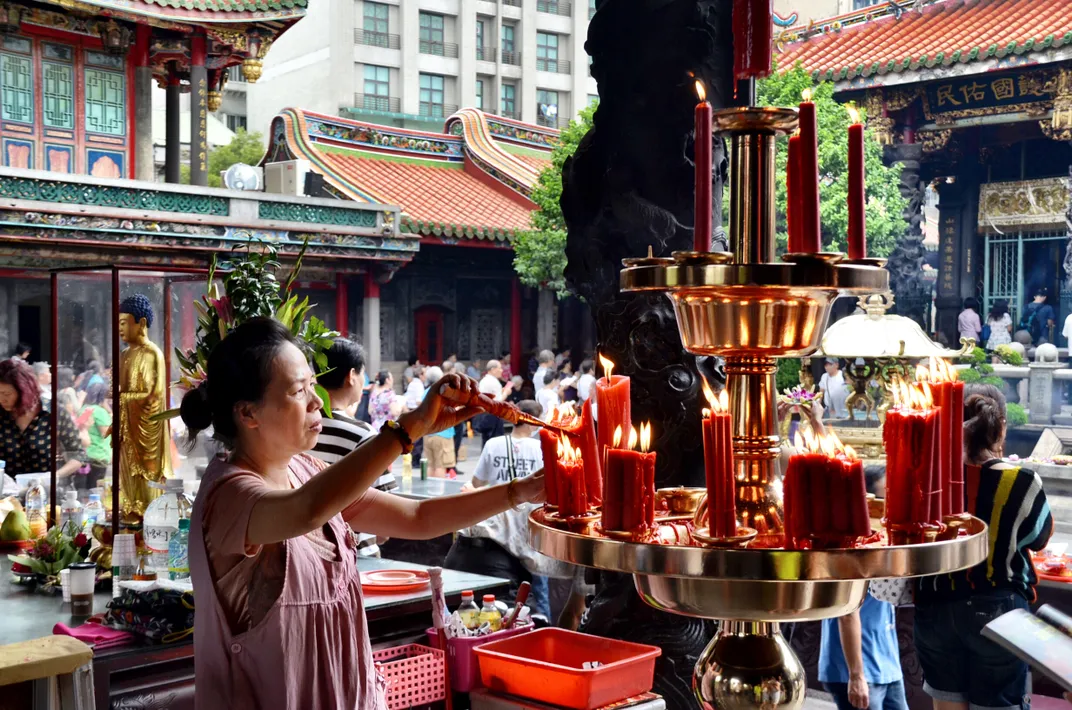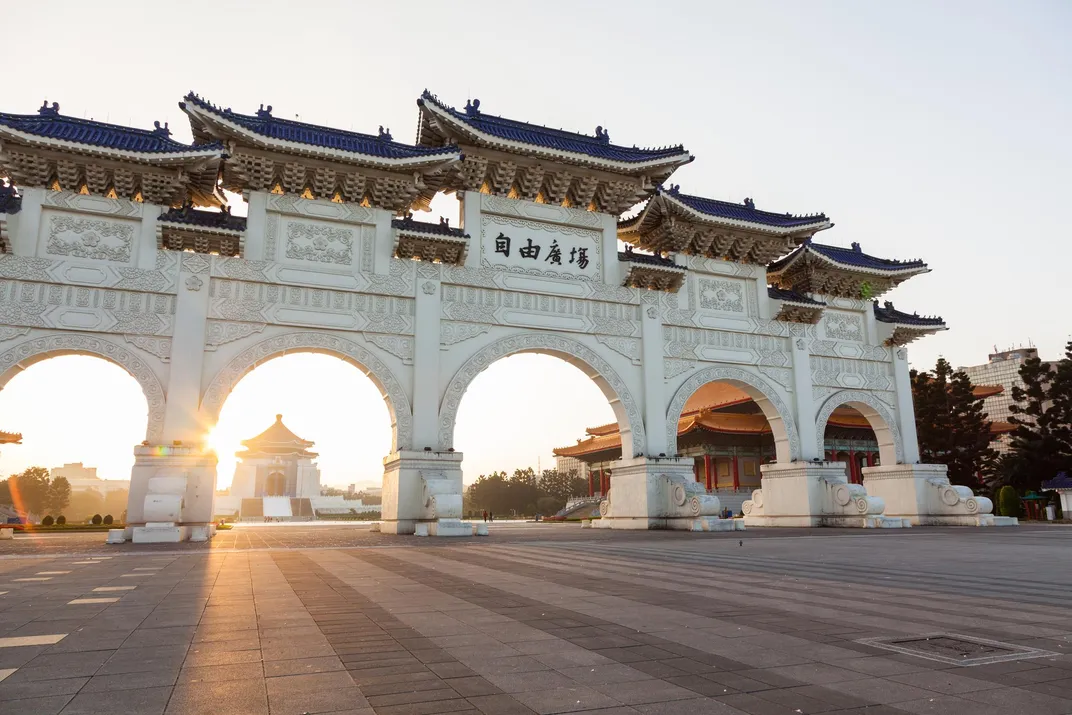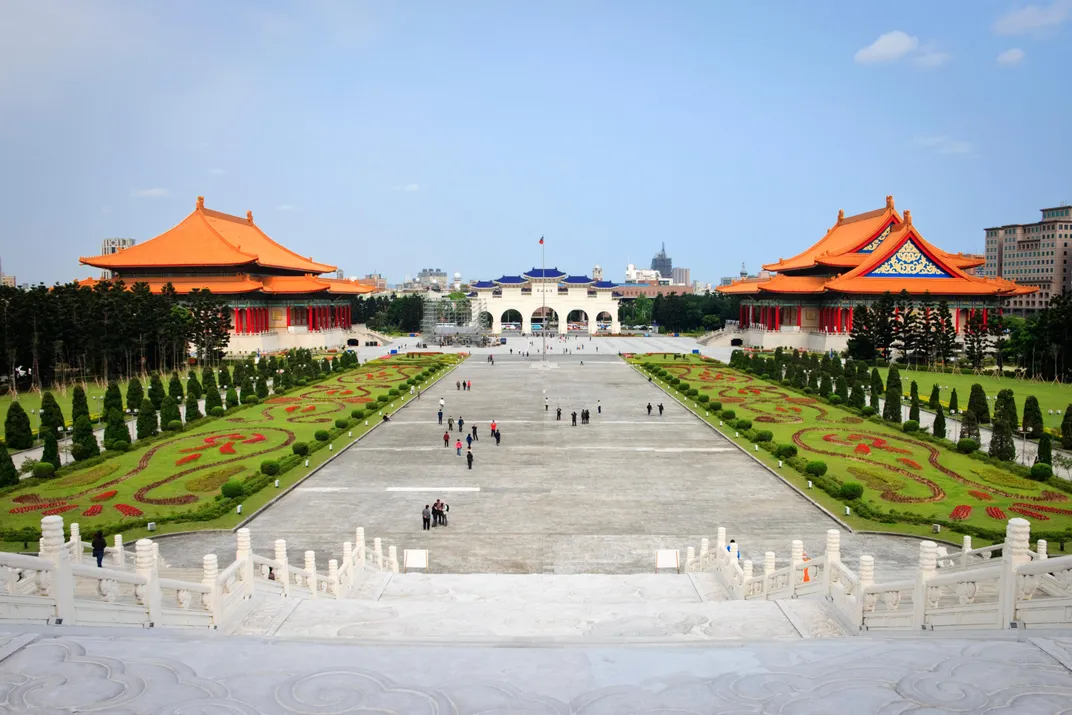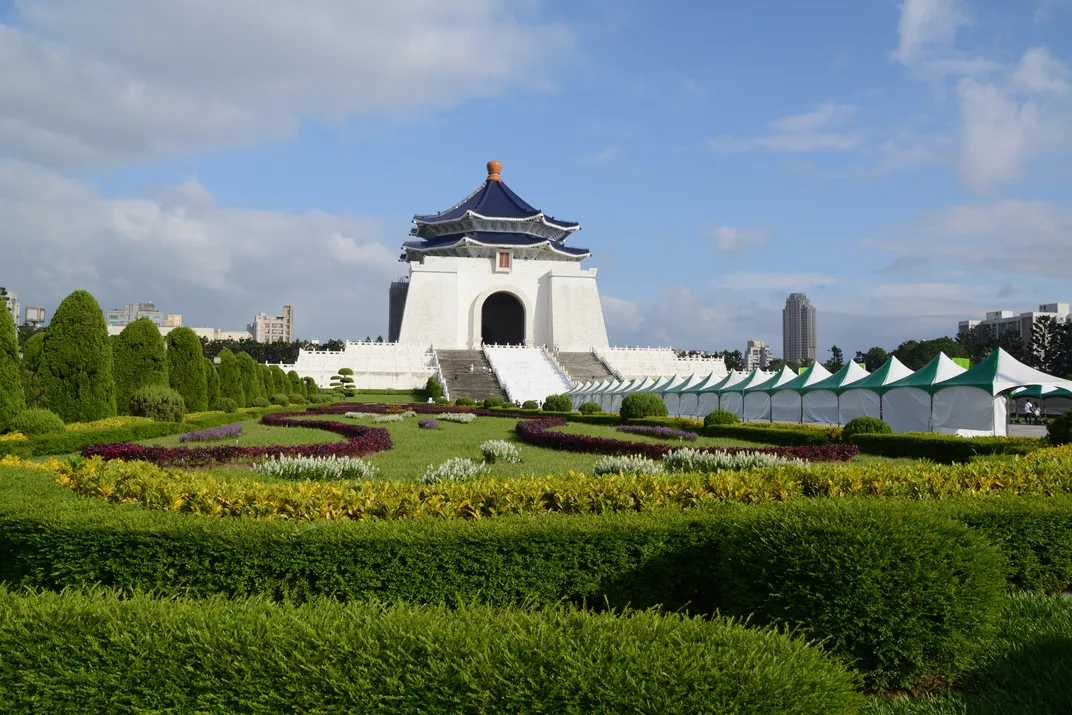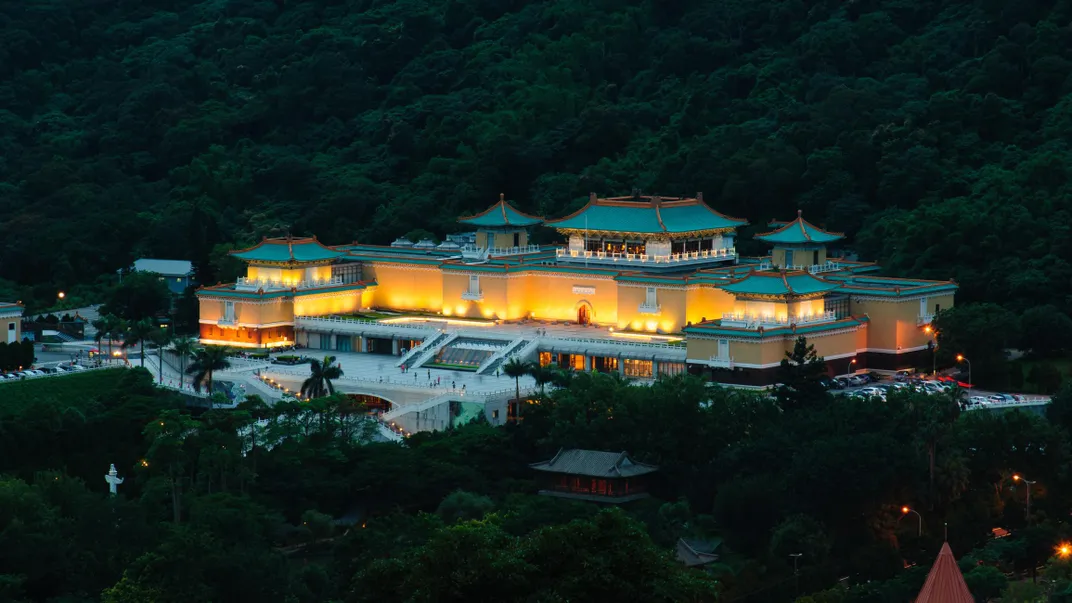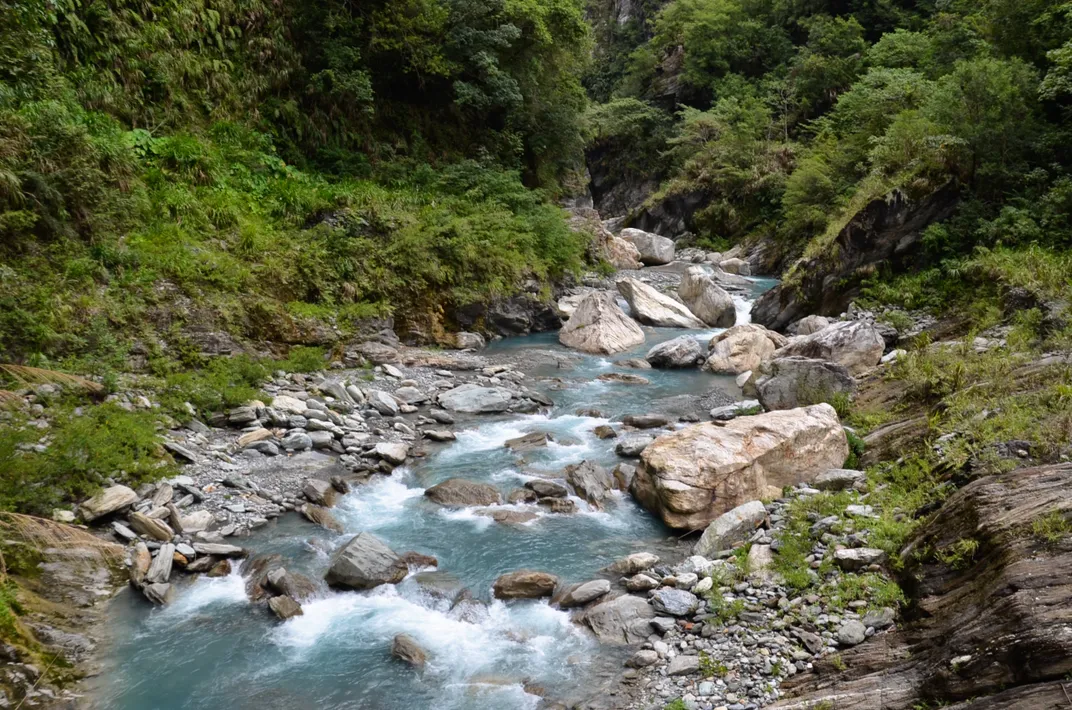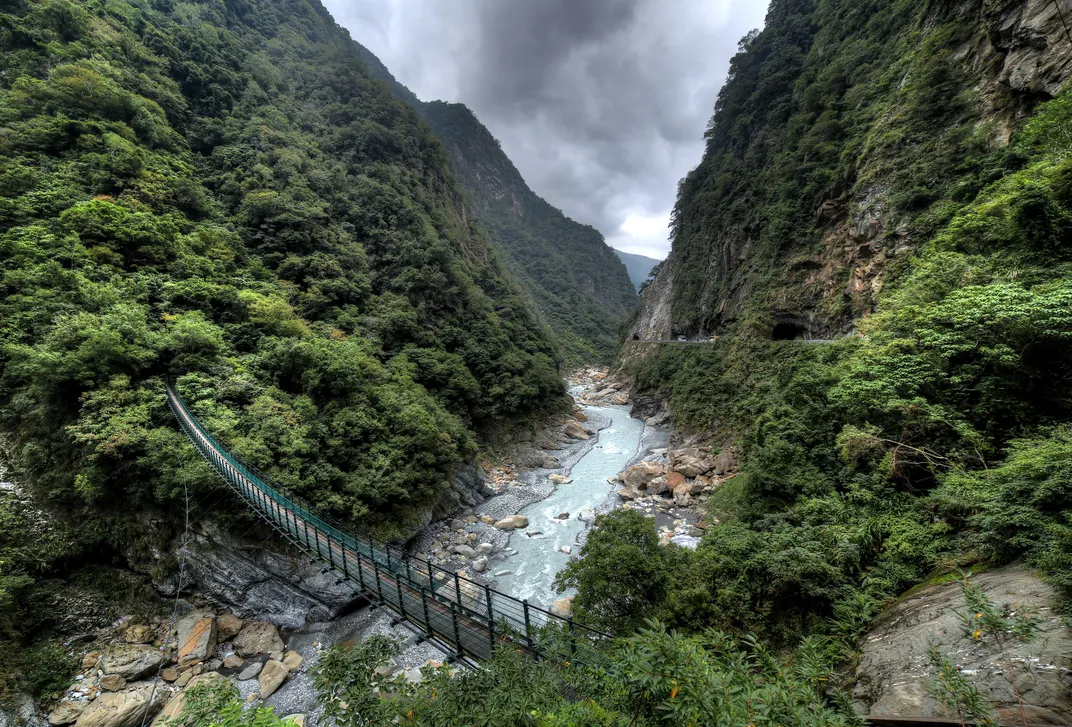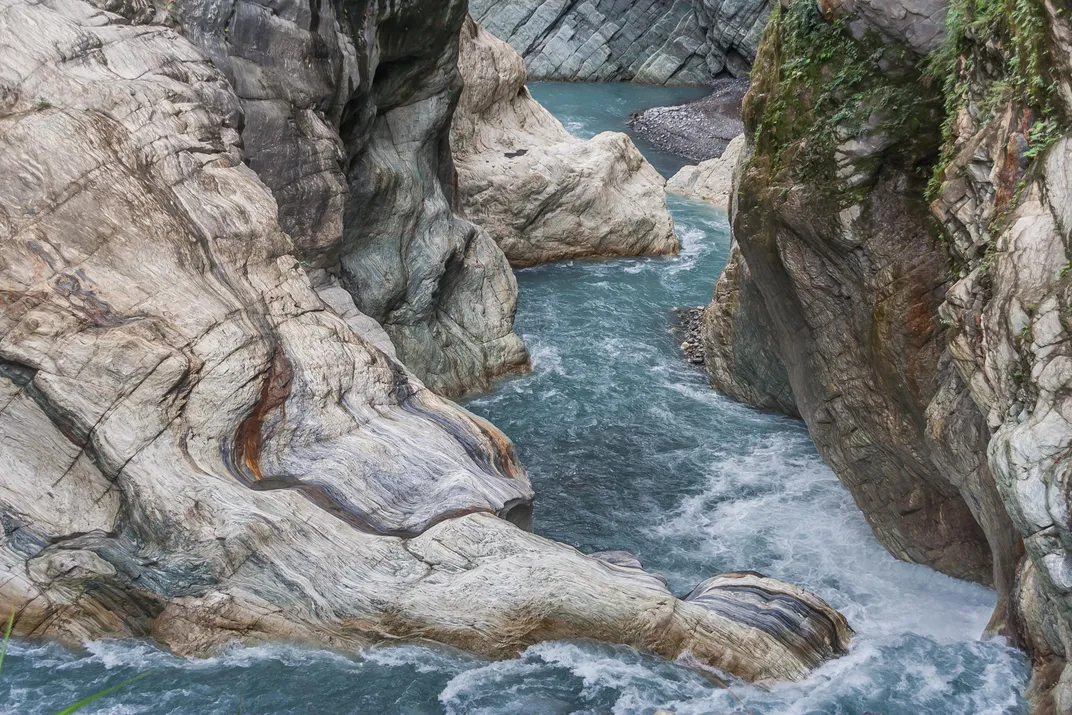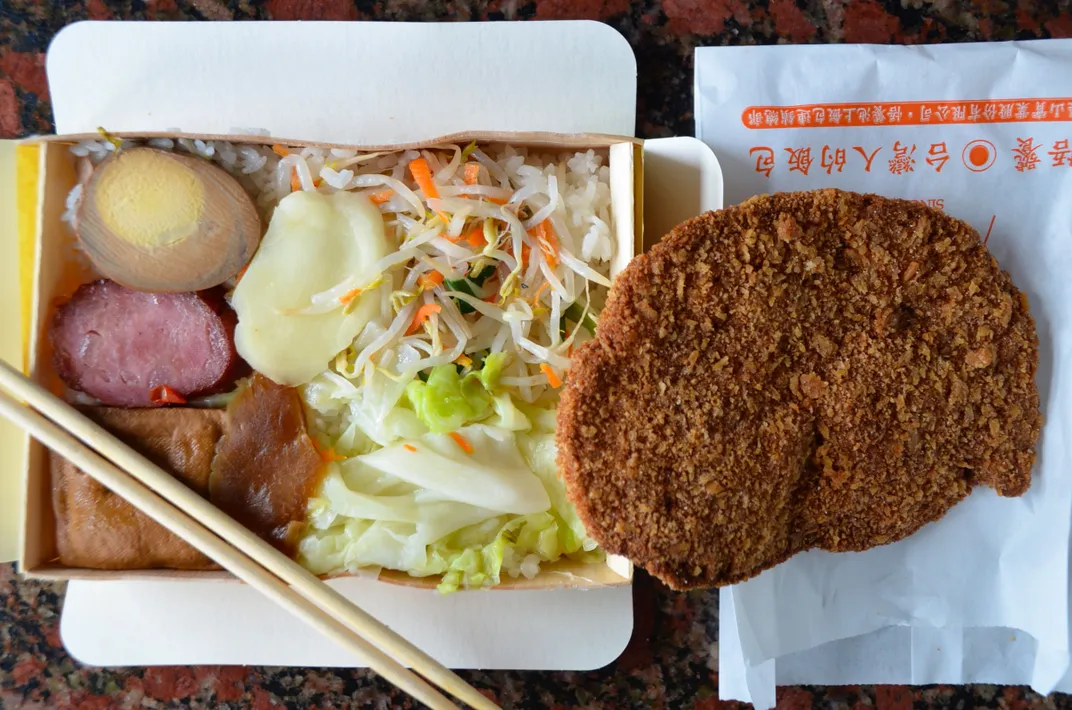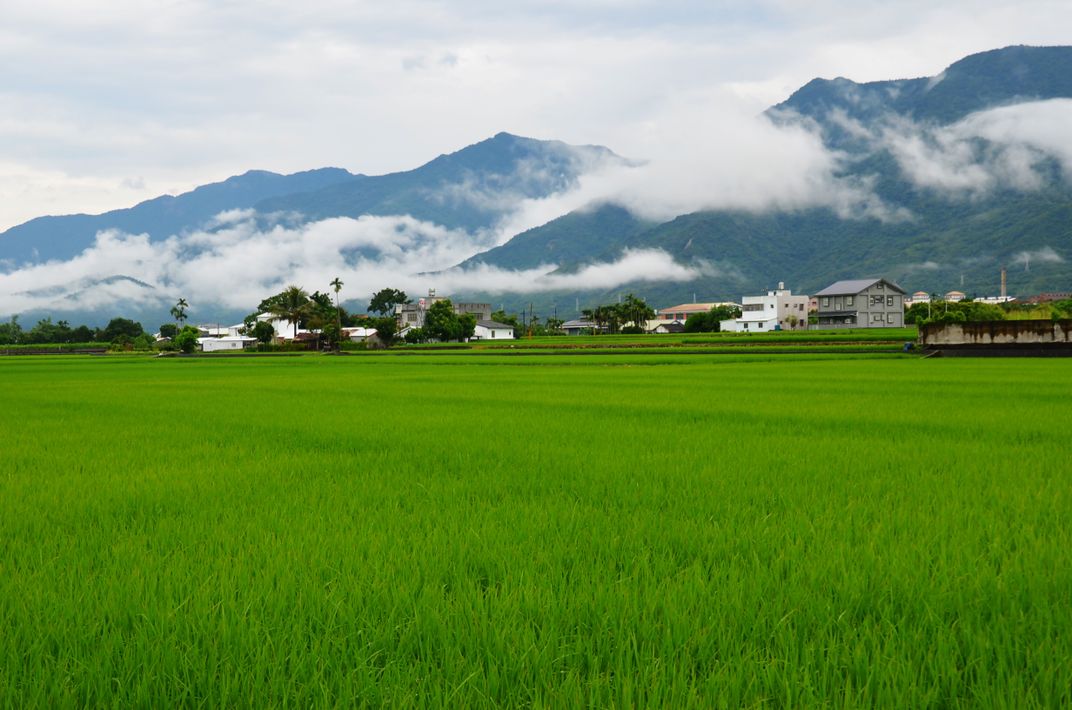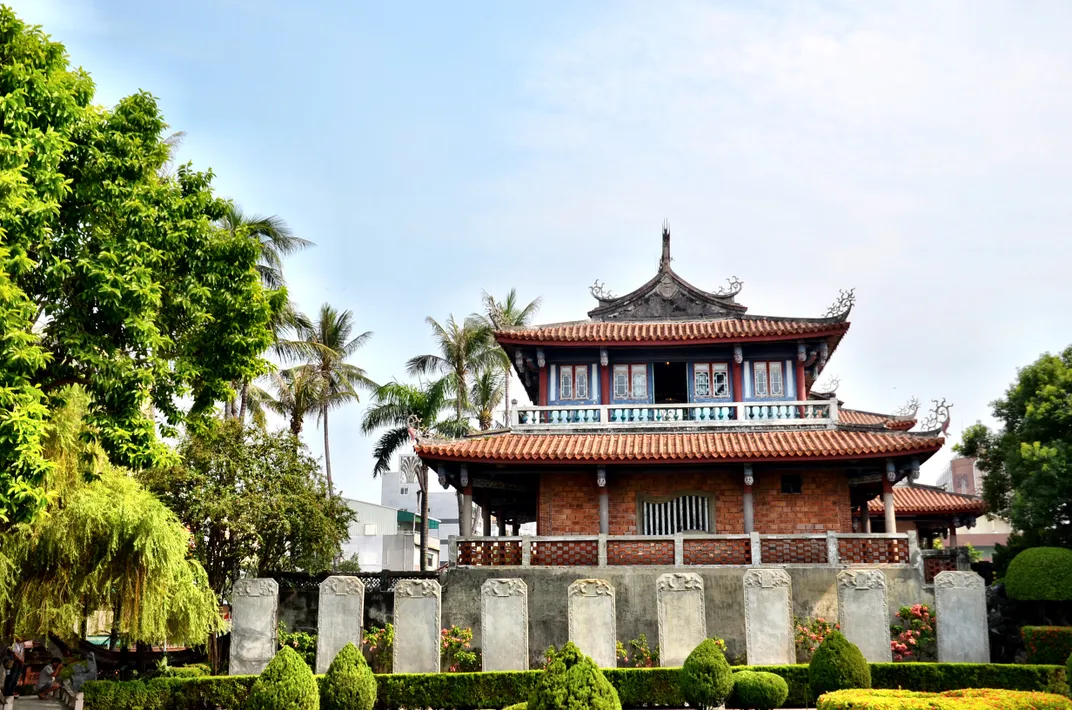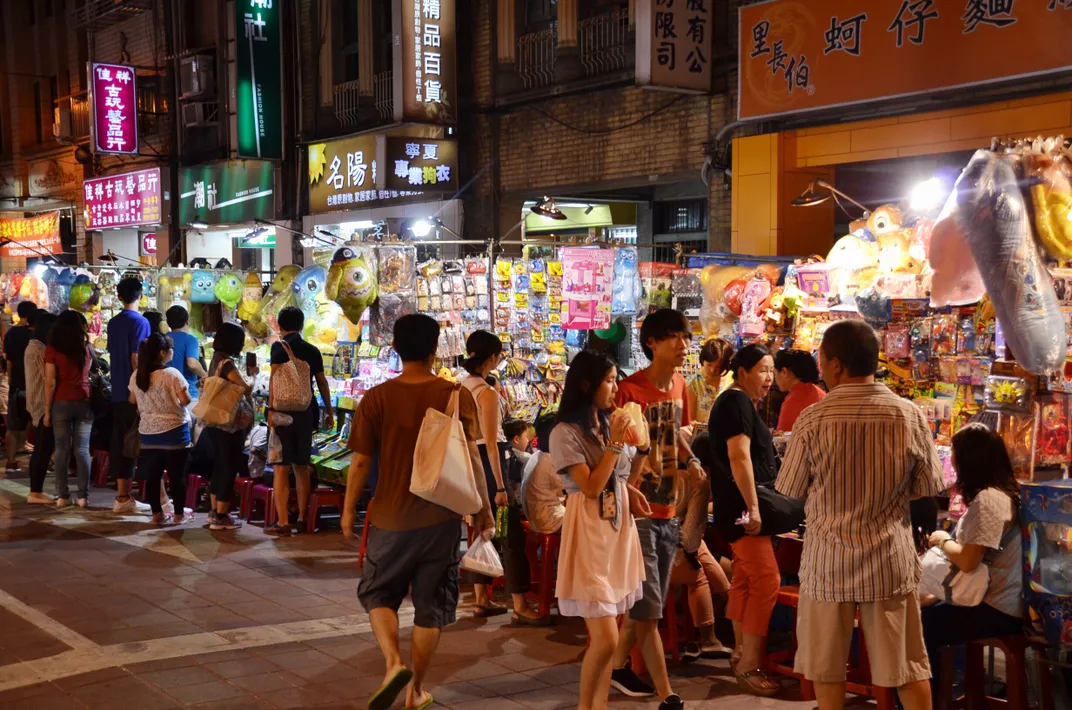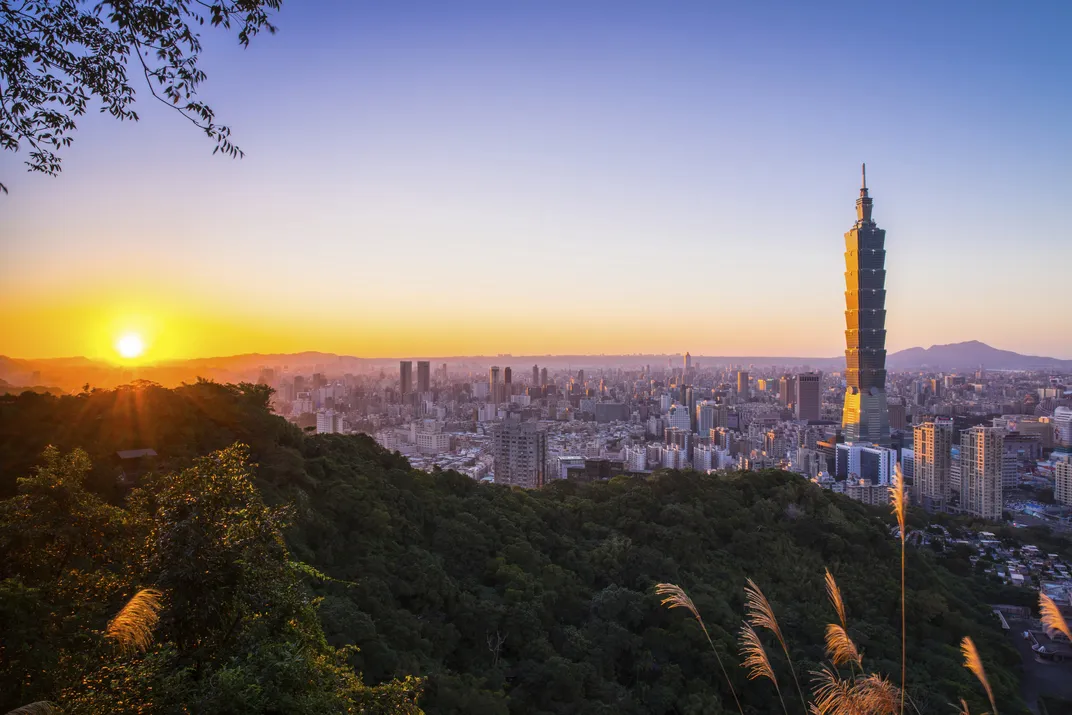Before visiting Taiwan in 2013, veteran travel writer Matt Long knew very little about the country. Once he arrived, he was blown away.
“There simply is nothing else like it,” he says. “It’s totally unique.”
Founder of LandLopers.com, Matt has visited dozens of countries. What impressed him most about Taiwan was its astounding natural beauty combined with a unique commingling of cultures. Visitors can listen to traditional indigenous music at Tiehua Music Village one day; the next, visit old Dutch forts and step inside Qing Dynasty temples.
From innovative restaurants in Taipei to lush mountain gorges in Hualien and historic architecture in Tainan, the island holds something for every traveler. Only slightly larger than the state of Maryland, Taiwan is easy to traverse, with major sights only a few hours from each other connected by a robust network of high-speed rail, trains and buses.
“If you’re an affirmed urban explorer, Taipei and Tainan can keep you occupied for days with shops, cafes, restaurants and a vibrant nightlife. But if you’re more of an outdoorsy type, the options are truly incredible,” says Matt. “No matter what you decide to do, be sure to slow down and connect with the local culture. Spend some time eating dinner at a night market or pull up a stool for an impromptu lunch. Food is an important part of the travel experience in Taiwan, and one that shouldn’t be an afterthought.”
A gateway to Asia, Taiwan is an ideal stopover destination. Not only is it safe and affordable, but the locals are also exceptionally friendly and hospitable. What's more, U.S. passport holders can visit without a visa. Drawing on Matt’s experiences, we developed a five-day itinerary featuring Taiwan’s must-see highlights. Though eight to 12 days is the ideal amount of time to experience the country, five days is the perfect addition to any Asia itinerary. Starting in the capital city of Taipei and looping around the coast to Tainan, this trip will introduce you to the best of Taiwan, both contemporary and historic.
Day 1 - Taipei City
Taipei is a strikingly modern and global city. Neon billboards and international stores dominate its streets, and in certain areas you feel like you’re walking through Times Square, Matt recalls. “It’s as advanced a city as exists in the world,” he says. However, reminders of old Taiwan are ever-present. Constantly evolving, the city simultaneously embraces its roots.
Begin your first full day in Taiwan at Longshan Temple. Set against the backdrop of modern skyscrapers, it is a colorful reminder of a bygone era. Built in the mid 18th century by immigrants from China’s Fujian province, today Longshan Temple is a cultural centerpiece of the city. Inside, time seems to stand still. Intricately carved dragons survey passersby from their rooftop stations, incense swirls in and out of quiet rooms, and the faithful bow in prayer.
Next, make your way to the Chiang Kai-shek Memorial Hall. Built in 1980 to commemorate the former president of the Republic of China, it is one of Taipei’s most prominent historical landmarks. Marking the entrance to the memorial hall is a 100-foot-tall archway topped with a distinctive blue-tile roof. From the archway, a stone path leads visitors past manicured lawns to the building housing a bronze statue of the late president and a museum dedicated to his life and legacy. The grounds, which span 60 acres, also feature a concert hall and theater space together with shaded corridors, exercise areas and walkways. For Matt, one of the best parts of visiting the memorial hall was watching the locals go about their day. “Tai Chi devotees meet at dawn and parents with scampering kids run through the massive ground of this living, breathing site,” he says. “This is Taipei, always keeping in mind the importance of a healthy and balanced lifestyle while honoring the past.”
A first visit to Taipei wouldn’t be complete without the National Palace Museum, which houses more than 690,000 artifacts relocated from Beijing in the early 20th century during the Chinese Civil War. It would take days, weeks, maybe years, to see everything in the museum, so Matt suggests picking and choosing what you want to see. The 19th-century jade cabbage is, akin to the Louvre’s Mona Lisa, a must-see.
Between sites, stop to enjoy some of Taiwan’s diverse culinary offerings. Taipei “runs the gamut for anyone’s food interests,” says Matt. This March, the world-famous Michelin Guides released their first ever guide to Taipei, which recognizes 110 establishments ranging from restaurants to street stalls and serving 33 different cuisine types.
This evening, travel by train to Hualien City
Day 2 - Taroko National Park in Hualien County
Today, explore Taroko National Park, one of Taiwan’s natural wonders featuring picture-perfect views at every turn. Of the many ways to explore the park, the centerpiece of which is the magnificent Taroko Gorge, Matt recommends starting out on the Baiyang Waterfall Trail. “This easy, 4-km hike is the perfect introduction to Taroko. The trail meanders through tunnels, snakes past massive white marble walls standing in shocking contrast to the icy blue waters below and leads to Water Curtain, a natural spring flowing through the roof of the final tunnel,” he recalls. Other highlights of the park include the Swallow Grotto Trail, along which swallows dart in and out of their nests in the rock, as well as Eternal Spring Shrine, built in the Tang Dynasty architectural style atop a waterfall cliff.
This afternoon, travel to Taitung
Day 3 - Chishang; Taitung City
Begin your day with a bike ride through Chishang, a scenic farming community dotted with rice paddies in the East Rift Valley outside of Taitung. “The quiet solitude of the farms and the fresh scent of blossoming lotus flowers and fresh grass is a spiritual experience for some, for others an immersive way to enjoy more of Taiwan’s natural treasures,” says Matt of the ride. Afterwards, be sure to try a Chishang lunchbox. Served in restaurants across Taitung, these iconic wooden ‘lunchboxes’ are filled with rice, cabbage, tofu and sweet sausage and enjoyed with fried chicken and pork.
Return to Taitung City via train and spend the rest of your afternoons soaking up the creative energy of Tiehua Music Village, home to a growing community of independent artists and musicians. “In the evenings, the small park lights up with craftspeople selling everything from homemade soaps to incredibly detailed watercolor postcards,” says Matt. “But the highlight is the nightly performances showcasing local folk bands and karaoke.”
Day 4 - Tainan City
Travel to Tainan in the morning
Matt describes Taipei and Tainan as “yin and yang.” Taiwan’s original capital city, Tainan is rooted in history and bears the mark of each civilization that has ruled it. To understand the influence of the early Dutch traders, Matt recommends a walk around the bayside Anping Fort, and for a glimpse into the lasting impact of Chinese culture, he suggests a visit to the 17th-century Confucius Temple and Tin Hau Temple. Home to a matchmaker shrine, Tin Hau Temple is popular with locals and visitors alike. "Anyone can make their love-related wishes by writing a note on provided paper," Matt says. "The wish is then placed in one of the small bottles hanging on the wall, and the faithful hope for the best. Be sure to be respectful and always leave a donation for the supplies—a small price to pay if you do find your soulmate."
One of the best places to witness Tainan's unique merging of cultures is Chihkan Tower, which began as a Dutch fort and later became a Chinese pagoda and Japanese army hospital. Today, Matt characterizes it as "welcome respite from a sometimes-hectic city." Another must-see is the pedestrian-only Shennong Street, which he describes as "constantly changing but always interesting." Dating back to the Qing Dynasty, it is one of Tainan's best preserved. “Once a busy working class zone with direct access to a once-busy canal area, today the street is home to small cafes, bars, shops and even artist’s studios,” Matt says.
Tainan is also a foodie’s paradise. Between destinations, try all manner of snacks from savory rice pudding prepared with soy sauce and sesame oil to pork belly buns and winter melon tea.
Day 5 - Taipei City
Travel to Taipei via high-speed train in the late morning
Spend your last day in Taiwan exploring more of its capital city. To size up your options, enjoy the view from Taipei 101, one of the world’s tallest skyscrapers. “In every direction, the city’s arteries spread like latticework through trendy neighborhoods like Daan where the boulevards are lined with sweet-smelling Camphor trees and stores are named after Fendi and Vuitton,” says Matt of the view. “Turning in the other direction far different districts take form, like Ximending where K-pop devotees line up for bubble tea and more traditional wares, such as dried mangos and dehydrated squid, fill the streets.”
In addition to its restaurants and street stalls, Taipei is home to several active night markets. If you fly out the next morning, be sure to walk through Ningxia Night Market for a true slice of life in Taipei. “Locals pack the market elbow to elbow, all there in search of cheap but tasty treats like red bean wheel cakes,” Matt recalls. “Oyster shells are scattered over small metal tables and a smoky aroma fills the air, evening chaos standing in stark contrast with the city’s daytime predictable order and rhythm.”


/https://tf-cmsv2-smithsonianmag-media.s3.amazonaws.com/filer/9c/c9/9cc9f8ef-4faa-4ff3-ad21-bef4164475a2/istock-482799371.jpg)

